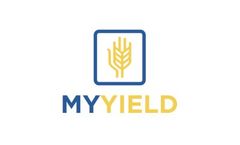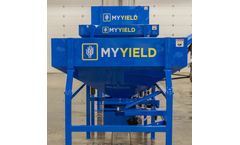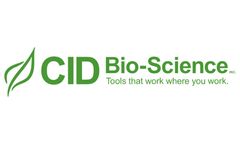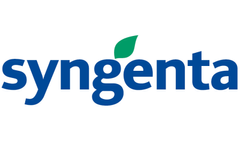Treated Seed Articles & Analysis
22 articles found
Seeds are the starting point for the majority of our food. Vegetables, cereals, fruits and many, many more products start as small seeds. ...
Seed treatment is no different. So we designed the My Yield seed treaters to treat seed fast enough for same day planting. My Yield seed treaters can treat a full box of seed in as little as 60 seconds. As a result, our growers are able to wait until minutes before heading to the ...
ByMy Yield
The My Yield 2500 is the original grower’s seed treater. The system has a small footprint and lets growers treat a box of seed in less than three minutes. Like all of our seed treaters, the My Yield 2500 enables our growers to treat directly into the tender on the way to the field. ...
ByMy Yield
The My Yield Grower doesn’t waste time waiting in line for treated seed. He doesn’t defer to others on what seed treatment to use on his farm. And he doesn’t get stuck with treated seed he can’t plant, return or sell. The My Yield Grower is confident in his ability to do the work himself. ...
ByMy Yield
As a result, you can only hope that you purchased the right amount of treated seed, that the seed treatment applied is right for your specific operation and that you’ll actually be able to plant that treated seed. ...
ByMy Yield
Cadmium is a heavy, non-biodegradable metal that is toxic to plants, people, and animals. With increasing pollution and emission of cadmium, its levels in agricultural soils are increasing. The risk to humans is high due to consumption of cadmium-contaminated food. Modern applications of gas analysis and laser measurements are speeding up research in addressing the problem of cadmium stress. ...
On the ground, the photos, news, and data from growers using our microbially-treated seeds have been exciting. During the 2018 season, growers reported early vigor, more tillers, and 10 bushel per acre increases at harvest, even with limited rainfall, late freezes, and record high abandonment rates in the region. ...
.: we worked with them throughout the growing season, providing treated seed and data-based agronomic advice, and are purchasing their harvests at a premium to sell directly to interested grain buyers. ...
To investigate this concern, we examined crops of 81 Northern Bobwhite and 17 Scaled quail to determine the presence or absence of three neonicotinoid (clothianidin, imidacloprid, and thiamethoxam) treated seeds. We did not find any treated seeds in the 98 crops examined. ...
This is the first large‐scale assessment of clothianidin residues in soil and bee‐relevant matrices from corn and canola fields after multiple years of seed‐treatment use. The average soil concentration from 50 Midwest US corn fields with 2 to 11 years of planting clothianidin‐treated seeds was 7.0 ng/g, similar to predicted concentrations from a ...
This study was designed to assess homing behaviour of bees foraging on winter oilseed rape grown from seed treated with thiamethoxam (as Cruiser OSR) with one field drilled with thiamethoxam treated seed and two control fields drilled with fungicide‐only treated seed. ...
They are used to coat most canola and corn seeds and many soy seeds in North America, as well as treat some fruit and vegetable crops and garden plants. ...
ByEnsia
White Bush Marrow). We found that seeds treated with NaCl showed reduced germination percentage, vigor index, length, fresh weight (FW), and dry weight (DW) of the roots, and shoots. However, nSiO improved seed germination, and growth characteristics by reducing malondialdehyde (MDA), hydrogen peroxide (H2O2) level, and, electrolyte leakage. ...
PLENE is an innovative yield-increasing technology for sugar cane, due to be launched in 2011. PLENE sugar cane segments are treated with seed care applications to protect them in early growth stages. ...
BySyngenta
It may be a win-win situation: treating seeds with commercially available growth promoters before planting could have the added benefit of attracting parasitic wasps that feed on caterpillar pests, suggests a study. ...
The aim of this study was to evaluate the antimicrobial and antioxidant potential of orange peel and seed extracts as additives to preserve quality of fresh–cut orange. Ethanolic extraction from seeds was fractionated in polar (PE) and non–polar (NPE) solvents, and essential oils from peels (PEO) were obtained. ...
The effects of 28-homobrassinolide (28-homoBL) on protein content and antioxidative enzyme activities in 7-days old Brassica juncea L. seedlings were studied. The seeds pre-treated with different concentrations of 28-homoBL were germinated in Petriplates supplied with various concentrations of heavy metal (Mn). ...
Relatively high seed prices and low canola (Brassica napus L.) grain prices created a controversy over using farm-saved seed from hybrids. ...
Two induced tetraploid plants were recovered from germinating 2x seeds treated for 24 h with colchicine. Bivalent and quadrivalent chromosomes were the most common association at meiosis in these autotetraploids. Embryological analysis and progeny tests using molecular markers revealed that both induced tetraploids reproduced sexually. ...
The objective of this study was to evaluate the efficacy of herbicide seed treatments for controlling Striga infestation of sorghum. Seeds of an acetolactate synthase (ALS) herbicide–tolerant sorghum hybrid were treated with two ALS-inhibiting herbicides. ...











